Letters to Pharaoh: The Canaanite Amarna Tablets
Many people are interested in the Amarna Letters because they give us a glimpse into the land of Canaan "before Israel." Discovered at the site of Tell el-Amarna in Middle Egypt, these cuneiform documents are letters dating to the mid-14th century BCE that were written in varieties of Akkadian, the lingua franca of the time, by scribes from all over the ancient Near East on behalf of local kings. The letters are commonly divided into two groups: letters from the "greater" powers (the Egyptian, Mitannian, Hittite, Assyrian, and Kassite kings) and letters from the "lesser" powers (smaller kingdoms and city-states from across the Levant, including the land of Canaan). Interestingly, even though the Canaanite rulers were among the least powerful kings writing to Egypt (in fact, they were under Egyptian rule), they left behind the largest number of letters.1
The Canaanite Amarna Letters tell us much about the political landscape of the Levant in the 14th century. Through them, we know the names and locations of many of the region's rulers and kingdoms. The letters can be used to identify ancient sites and to reconstruct trade routes and political alliances between local elites and the people they governed. They tell us about the inner workings of Egypt's empire, and they provide us with the perspective of the local peoples who were dominated by a foreign military power. We can also see how Egypt pitted cities and towns against each other and played on local rivalries and power struggles.
Yet it is important to remember that these letters were written, received, and read not by the rulers themselves—who in most cases could not read or write—but rather by the skilled scribes who worked for them. The Amarna Letters were not written in alphabetic or Egyptian scripts. They were written in cuneiform, a wedge-shaped script that was developed in Mesopotamia in the late fourth millennium BCE to write Sumerian and, later, Akkadian. By the Amarna period, ancient people from all over the Near East wrote in this script by impressing a stylus into clay to create wedge-shaped signs.
Scribes first learned how to write the basic cuneiform signs and then moved on to learning how to write syllables and signs that represented entire words. They learned using "lexical lists," essentially multilingual dictionaries that gave the Sumerian and Akkadian equivalencies for Canaanite and even Egyptian words; they also wrote out exercises to practice the types of texts (especially letters, contracts, and legal texts) they were expected to know how to read and compose. More advanced scribes learned literary texts, which included famous works such as the Epic of Gilgamesh. A fragment of a version of this well-known text was even discovered at the site of Megiddo in northern Israel.
The scribes of Canaan, however, developed their own unique system to write cuneiform. We call this system "Canaano-Akkadian" because of the ways in which Canaanite scribes adapted Akkadian to their specific needs and circumstances. Their letters, for example, show us that even though Canaanite scribes used Akkadian words and linguistic elements, they tended to write using the grammar of their own Canaanite languages, with verbal forms marked for person, number, and gender according to Canaanite morphology. Some scribes also used Canaanite and even Egyptian words, which they noted in their letters using special marks (which scholars call "gloss" marks). In this letter, for example, a scribe writing for Tagi, the Canaanite ruler of Gezer, uses two Canaanite words, along with their Sumerian equivalents, to communicate his king's dependency on the pharaoh:
If we might ascend into the heavens [Sumerogram] : heavens [Canaanite].
If we might descend into the earth, our head [Sumerogram] : head [Canaanite] would be in your hands.EA 264:15–19
Although the Canaanite Amarna Letters were originally viewed by scholars as impoverished compositions, written by scribes with a limited grasp of Akkadian, today they are studied as some of the most linguistically complex texts from this period. Yet scholars still struggle to understand how this unique scribal system developed.
So what was Canaano-Akkadian and how was it used? First, it is helpful to think of a modern analogy. Today, English is used all over the world for many different purposes and is the global lingua franca for business, politics, and publishing. But no one group "owns" English. It is malleable, fluid, and always changing. To be sure, it has a linguistic basis that comes with a core set of words and grammatical conventions; there are also conventions about how to write it. But its spelling varies (e.g., American vs. British English) and its lexicon is always expanding (e.g., many of us now "google something" on the internet). English is also impacted by the spoken and written languages of the people who use it. This is why sociolinguists today do not view English as a monolithic language but often describe it as a continuum of different kinds of "Englishes."
We can use this analogy to think about scribes writing in Canaan. Even though Canaanite scribes were not fluent speakers of Akkadian (indeed it is unlikely they used or spoke Akkadian at all outside of their professional work), they were experts in cuneiform and how to use Akkadian writing to compose specific types of texts. They knew how to make cuneiform signs and how to combine them to represent the needs and wishes of the rulers they represented. Scribes also learned conventions about how to write a letter using the appropriate protocols and formulaic language and how to encode additional information for the reader, including how the tablet should be held, where the letter begins and ends, and how different sections should be organized.
We also see clear examples where scribes opted to lean into their own linguistic backgrounds and write in Canaanite to add depth and urgency to their messages. In this way, they infused their letter with the voice of the ruler they represented. Take the example of a well-known letter written for Labayu, king of Shechem (see image at beginning of article), in which the scribe concludes the king's message by writing a cluster of Canaanite verbs using the cuneiform script. Labayu complains that the pharaoh is unjust: Labayu is being attacked but is told to hold off from defeating his enemies. He is like an ant that is being crushed by a huge hand. Yet, in the letter's heavily Canaanite conclusion, the scribe makes an eloquent argument about Labayu's loyalty to the pharaoh: even though Labayu is being harmed, he will obey the pharaoh's orders and submit to his enemies.
When an ant is smitten, does it not fight back and bite the hand of the person who struck it? So I am being attacked. This very day a second of my cities has been captured.
If you were to say: "Now fall under them and let them strike you…"
As for my enemy, I will indeed protect the men that captured the city.
I can expel my enemies, yet, I will protect them!EA 252:16–31
Although particular points of this passage are debated, the scribe clearly shifts to use the local language to communicate Labayu's frustration and yet his insistence that he is obeying the pharaoh's orders even though he is being attacked.
Not surprisingly, Canaanite scribes also knew some Egyptian and were familiar with how their letters were received at the Egyptian court. For example, a scribe writing for Abimilki, king of Tyre, appears to have a deep understanding of the religious changes taking place in Egypt under Pharaoh Akhenaten, who famously elevated the sun god Aten to the head of the Egyptian pantheon. In his letter, the scribe praises the pharaoh (and his father, Amenhotep III) as the solar deity (while using an Egyptian gloss to convey the well-known "strong arm" of Egypt's king), but also draws upon local Canaanite imagery connected to the storm god Baal:
My lord is the sun god,
who has come out over the lands daily,
following the course of the sun god,
his beautiful father,
who gives life with his sweet breath,
and returns by means of his north wind,
of whom all the land is established in peace by the
strength of (his) strong arm [using the Egyptian word hpš],
who spoke in the heavens like the storm god,
and all the land trembled from his cry.EA 147:5–15
We also see a few examples where Canaanite scribes wrote brief messages to the scribes in Egypt who would receive the letters on the pharaoh's behalf. This practice suggests that scribes in the southern Levant understood the letter-exchange process, including who would be receiving and reading their letters once they arrived in Egypt. For example, a scribe who wrote several letters for Abdi-Heba, the Canaanite ruler of Jerusalem, often added a short "postscript" to their letters asking the Egyptian scribe to do a good job communicating the letter's words to the pharaoh:
To the scribe of the king, my lord, a message of Abdi-Heba, your servant:
Present the eloquent words to the king, my lord!EA 286:61–63
How do we classify Canaano-Akkadian? Some think it was a "mixed" language that came about through regular contact between Akkadian and Canaanite speakers.2 Others view it as an "interlanguage" that developed when scribes began to fill in gaps in their Akkadian with more and more Canaanite forms, creating a language halfway between Canaanite and Akkadian that they learned in their scribal schools.3 Yet another proposal is that scribes were not writing Akkadian at all; instead, they were writing Canaanite, using Sumerian and Akkadian to represent words in their local languages.4
Canaano-Akkadian, however, was not simply a language. As noted above, it was an entire scribal system that incorporated a range of knowledge about how to transform clay into a diplomatic letter, including letter design and layout, the use of scribal marks, and especially using the cuneiform script to mediate between Egyptian and Canaanite elites.5 In a way, we can think of Canaano-Akkadian as a scribal code that adapted cuneiform to the unique needs of Canaanite scribes who interacted with Egyptian scribes and administrators.
Finally, it is important to remember that the Canaanite Amarna Letters are not the writings of a single scribal community, but rather are the work of scribal groups from all over Canaan. Some scribes worked for more than one ruler. Some rulers, like Rib-Hadda of Byblos, had several scribes working for them. Some scribes stayed at one site, while others traveled with the ruler they represented. Some scribes even traveled to Egyptian bases in Canaan, or to the pharaoh's court in Egypt.
How do we know? We can study the points of origin of the clays used in the Amarna Letters to track where scribes were working.6 We can also identify individual scribes by comparing the paleography of the documents—that is, the handwriting of the cuneiform signs themselves—as well as their language, spelling, and repeated use of certain phrases. Other features of the letters, such as their layout, particular scribal marks, and references to specific people and places, can also help identify scribes.
All these pieces of evidence help solve the puzzle of who wrote the Canaanite Amarna Letters. Although we do not know the names of these ancient writers, their letters allow us to study their writing practices and learn about the vital role they played in communication and diplomacy during the Late Bronze Age.
-- Sent from my Linux system.
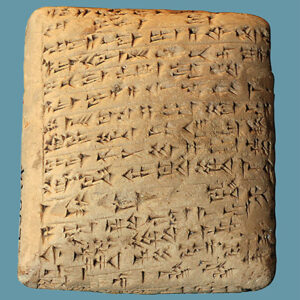
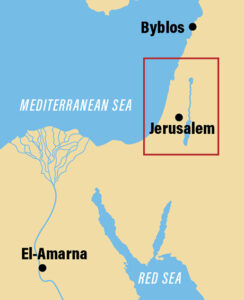
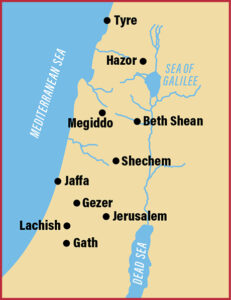
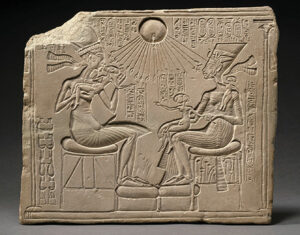
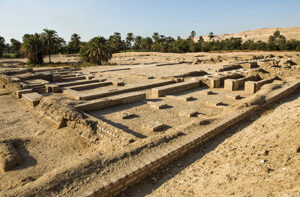
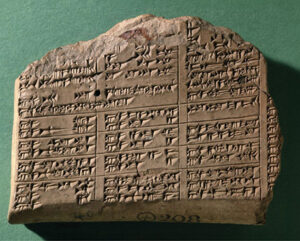
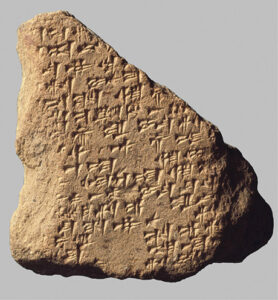
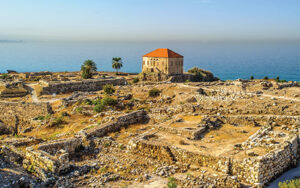
No comments:
Post a Comment